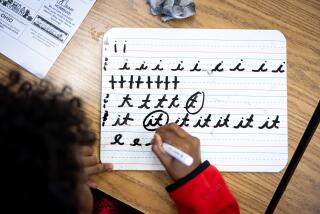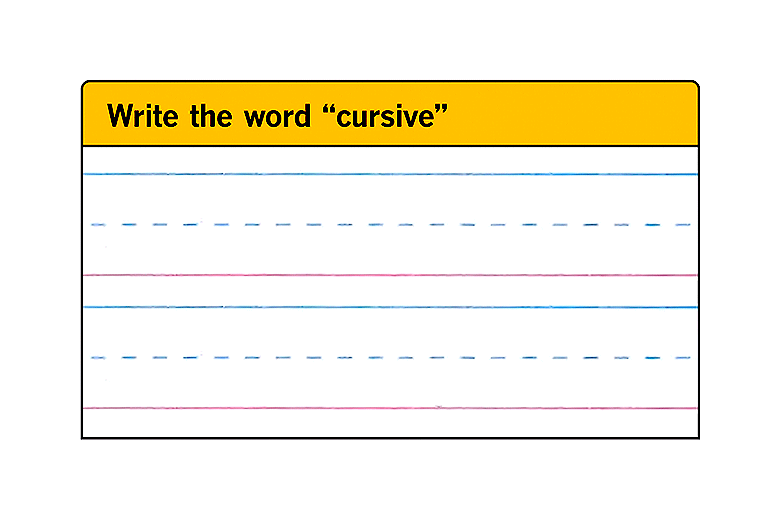Self-esteem flows at their fingertips
- Share via
EDINBURGH, SCOTLAND — In this age of cellphones, text messages and computer keyboards, one Scottish school has returned to basics. It’s teaching youngsters the neglected art of writing with a fountain pen.
There is no clacking of keyboards in most classrooms at the Mary Erskine and Stewart’s Melville Junior School, although there is a full range of facilities for computer lessons and technology isn’t ignored.
But the private school’s principal believes the old-fashioned pens have helped boost the academic performance and self-esteem of his 1,200 pupils.
“The pens improve the quality of work because they force the children to take care, and better work improves self-esteem,” Principal Bryan Lewis said. “Proper handwriting is as relevant today as it ever has been.”
Students as young as 7 have been instructed to forgo their ballpoint pens and get to grips with its more artful predecessor. By the time they reach fifth grade, at age 9, they are expected to write mainly with fountain pens.
At an English class recently, students worked to perfect a skill that is under threat from the onset of e-mail -- the art of writing a letter by hand. Each child’s work was meticulous and clearly presented in the upright, graceful strokes of a fountain pen.
Ten-year-old Cailean Gall has been using fountain pens in class for two years. It took him one month to master the pen and, like all pupils at the school, he still has regular handwriting lessons.
“At the start it was hard because I kept smudging, but you get used to it,” he said. “I still have to use a pencil for maths, and now I find it strange using the pencils. I like it because it makes me concentrate much more on my work.”
Cailean now uses his fountain pen even for non-school work. But classmate Katie Walker, 11, prefers to use ballpoint and pencil when not in class.
“I use it for schoolwork and homework only,” she said. “It is quite easy using a fountain pen once you’re used to it. My parents say it’s improved my work enormously.”
The children learn a handwriting style developed by teachers at the school, which charges $12,500 a year. New teachers also take a course on how to write with the pens -- as well as refresher courses on literacy and numeracy -- before they are let loose in classes.
Lewis said the school’s 7- and 8-year-olds use fountain pens for 80% to 90% of their work.
“I don’t see fountain pens as old-fashioned or outmoded. Modern fountain pens are beautiful to use; it’s not like in the old days of broken nibs and smudging,” Lewis said.
Parent Susan Garlick supports the school and believes the use of fountain pens has improved the work of her daughter Elisabeth, an 11-year-old in seventh grade.
“Her handwriting is beautiful,” Garlick said.
Some people in wealthy nations argue that handwriting is becoming less important because of cellphone text messaging and computers, but the school disagrees.
In August, for example, examiners at the Scottish Qualifications Authority complained that they had difficulty deciphering the scrawl of many students on exam papers used to determine admission to universities.
“We talk of the paperless office and the paperless world, but this is not true,” Lewis said. “You still need to have proper handwriting skills.”
More to Read
Sign up for Essential California
The most important California stories and recommendations in your inbox every morning.
You may occasionally receive promotional content from the Los Angeles Times.













